#insert excuses
Photo


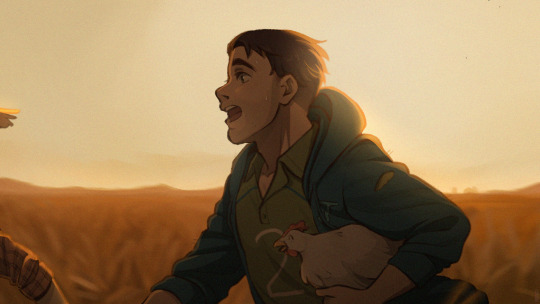
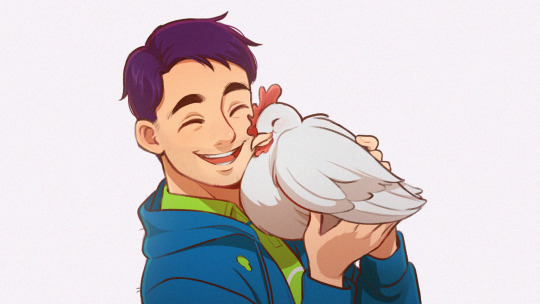
#stardew valley#stardew valley shane#sdv shane#HELP#okay hear me gush#I hated this man so much on my first playthrough and literally avoided him at all cost cuz he was so rude -sob-#that was way back in 2020#and then insert me playing sdv 2023 and#👀#straight up evaporating#i relate to this man surprisingly and#chef kiss#also im practicing drawing my backgrounds and lighting so this was a good excuse to study coloring!#gonna draw some other stuff when i can just to practice
15K notes
·
View notes
Text

Hermitcraft Postal Service off-roading!! I really love all the vehicles Pearl has been making here recently, so I just had to draw her driving one. I was inspired primarily by the mail van, and made this roofless just for fun.
Full image and closeups below! (Fair warning: the full image has a lot of perspective/motion blur at the edges)
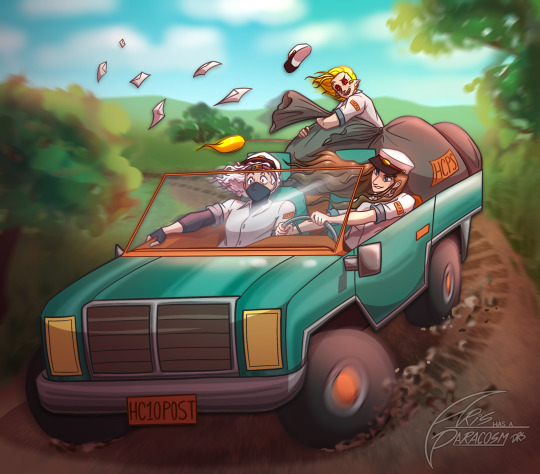


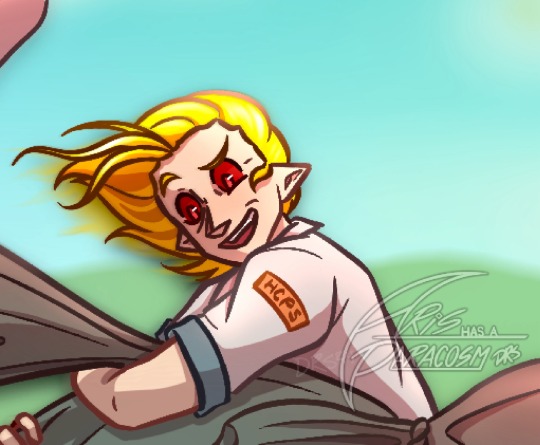
#hermitcraft#hermitblr#pearlescentmoon#ethoslab#tangotek#hermitcraft post office#vehicles are surprisingly fun to draw#I believe in curly-haired Etho supremacy#any excuse to draw Pearl being cooler than anyone else#also happy [insert-middle-aged-dad-age-here]th birthday to Tango#aris paracosm art
3K notes
·
View notes
Text

My first tumblr post aa throws this unshaded mess at you and runs
#fnaf#fnaf sb#dca#daycare attendant#moondrop#moon fnaf#moon security breach#moon x y/n#moon x self insert#my art#hdbdhwhdbhss#im not used to posting#and i also dont really like my art#but i felt like i could share this#SORRY FOR THE TERRIBLE PROPORTIONS BUT IM FAR TOK LAZY TO FIX#the hearts r so sappy lamsmksjdjd#might delete later tbh#this is very low effort excuse me#lems silly stuff
3K notes
·
View notes
Text
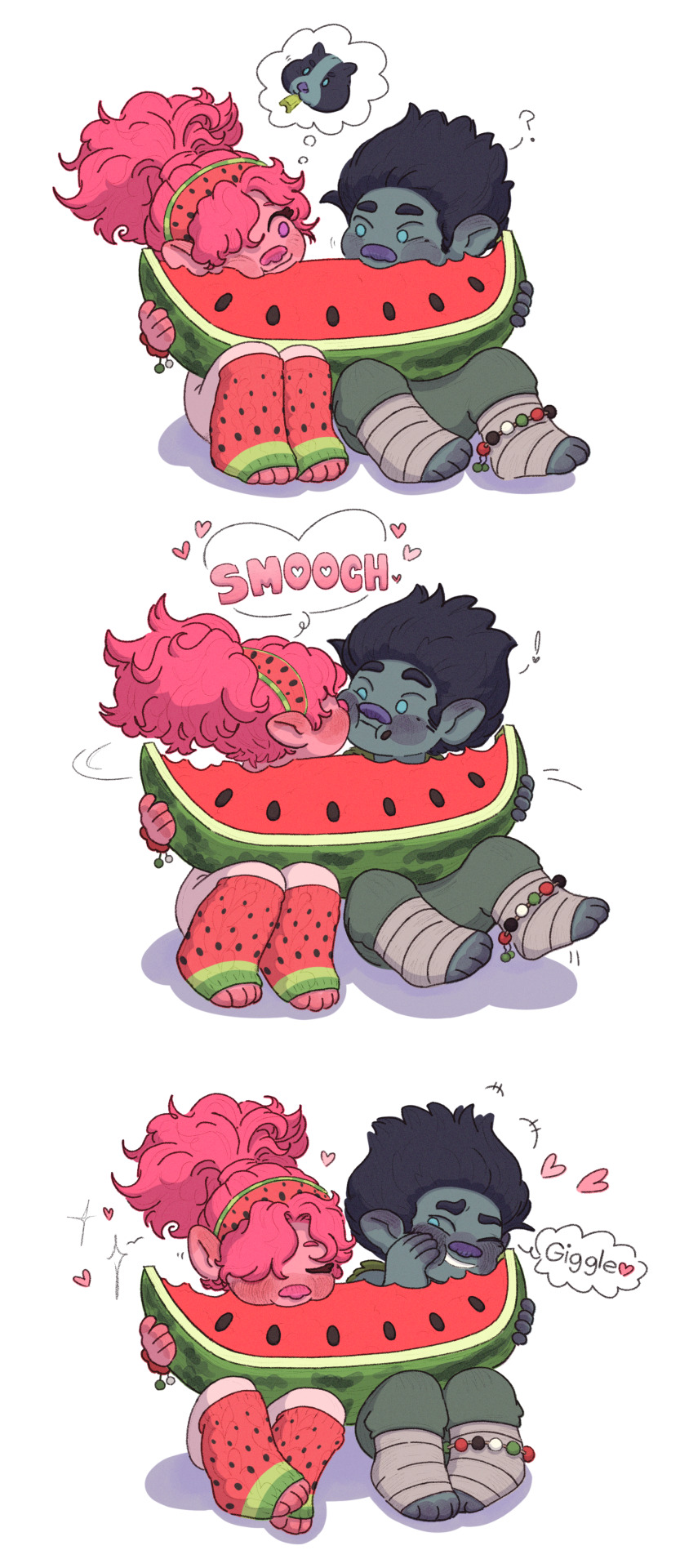
Watermelon peck
#trolls#dreamworks trolls#trolls poppy#trolls branch#broppy#trolls fanart#insert holiday in harmony giggle#watermelon!!!#trolls and giant fruit have a chokehold on me#troll sizing in general is so fun and whimsical#one full watermelon is probs enough to feed a whole troll village haha#they're eating one of those small melons here though#maybe a small melon is for parties/events and like the pops eat one entire big watermelon for a holiday#my art <3#excuse the messiness#btw thank you everyone who has interacted with my posts so far :)#so nice and encouraging <3#hopefully this isnt fuzzy#click on pic for slightly better quality pls#idk what to name this piece tbh
2K notes
·
View notes
Text
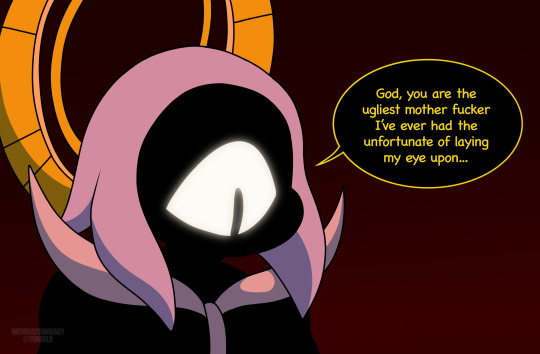
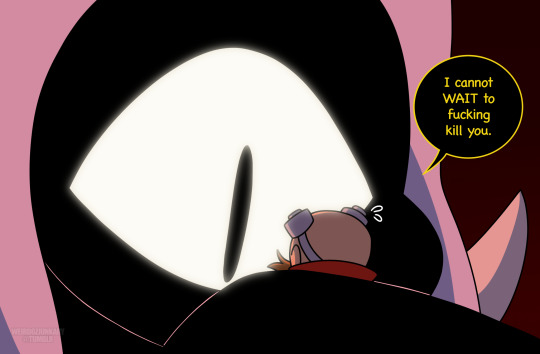
Pretty much what happened immediately after Zepperiath had awoken by Eggman. The guy was not thrilled over Eggman wanting to use him to take over the world for his own selfish needs. But then again, isn’t that what he’s doing anyways?
#art#fanart#comic#sonic horror au#COTH au#dr eggman#Zepperiath#insert me making every excuse to not draw Eggman lol
512 notes
·
View notes
Text
it's for a tiktok, they said... it'll be funny, they said...
[ pls do not repost . reblogs are ok ]
images under the cut !

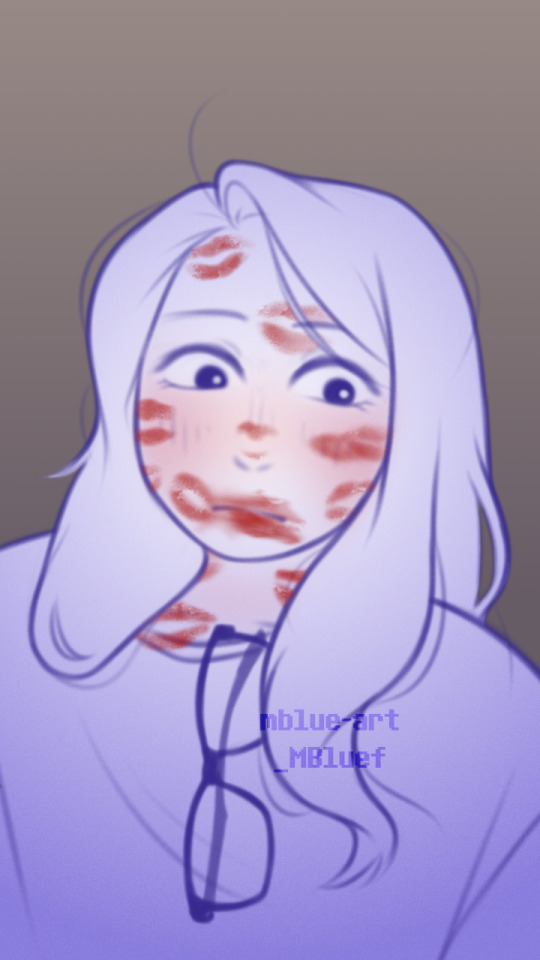
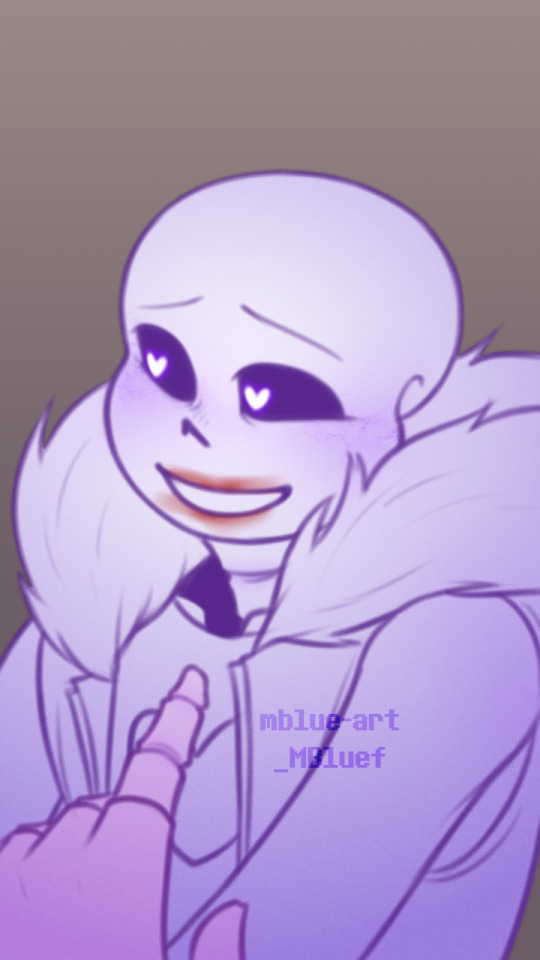
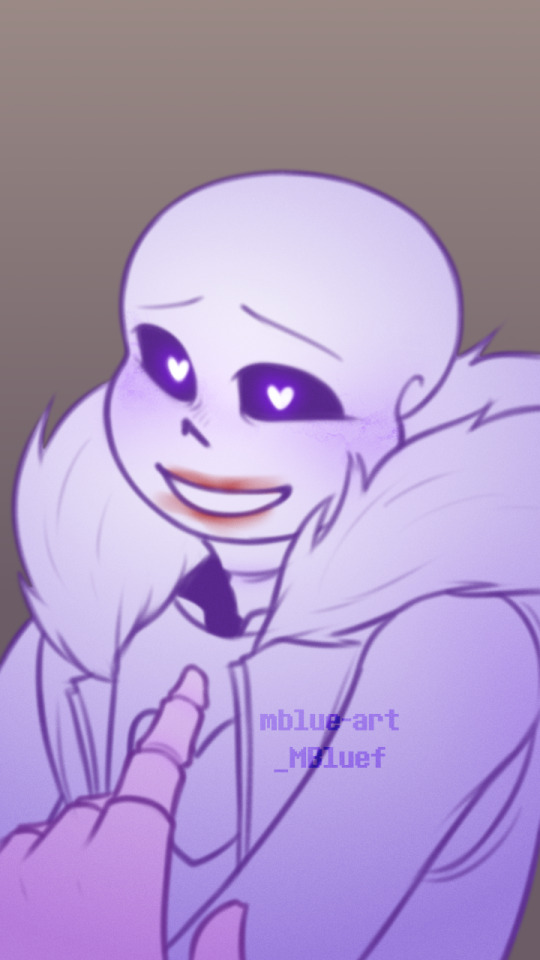


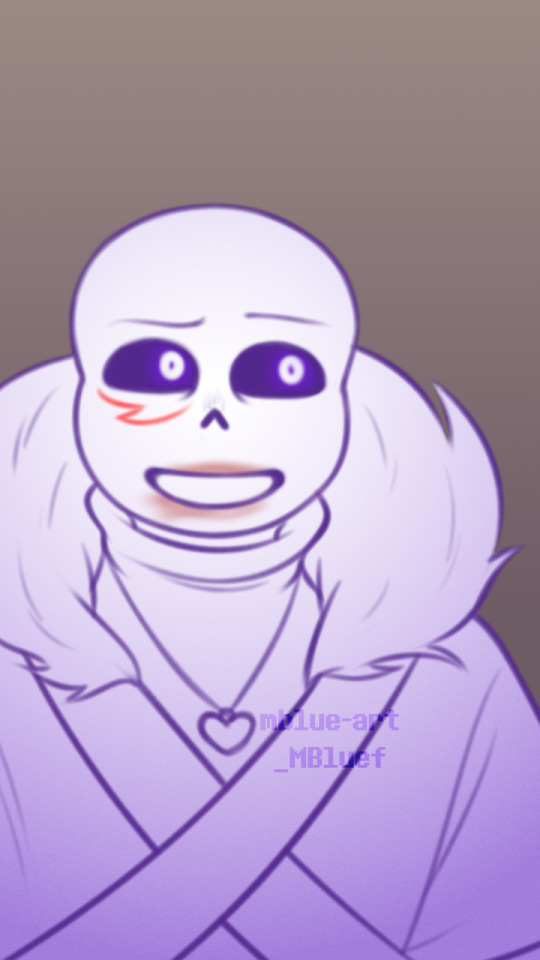
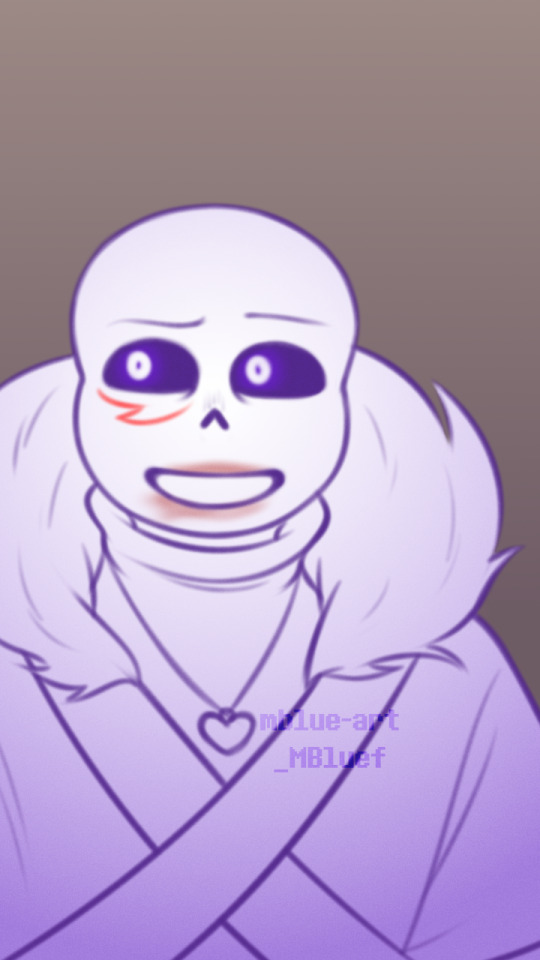

#epic!sans#self insert#lust!sans#killer!sans#cross!sans#mblue art#video#yeah sure... they def didnt use this as an excuse to plant kissy marks on my face......... (¬////¬)#(tried a thing and uhhhh ya!)#(i wanted to do this one so i tried to speedrun it or smt)#(i thiiink this is my first video art thing WOOH)#(edit: NO WAY I ACCIDENTALLY POSTED SMT EARLIER AGAIN RRRR HSHDHDB)#(anyway hi. im alive and well i just do not have the spoons to socialize/do stuff lately. the demons got me 💀💀💀)#(i see those snm asks tho!!! gonna try to tackle those next if i can)
272 notes
·
View notes
Text
Film Grammar for Simmers
What is film grammar?
"Film grammar" refers the unstated "rules" of editing used in movies and TV. Different types of shots have different associations and are used by editors to convey different types of information to the audience. Many of these principles were first described in the early 20th century by Soviet directors, but they're used consistently across genre, medium, and even language: Bollywood musicals, English period dramas, Korean horror movies, and American action blockbusters all use many of the same techniques.
Because these rules are so universal, virtually everyone has some internalized understanding of them. Even if they can’t name the different types of shots or explain how editors use images to construct meaning, the average person can tell when the “rules” are being broken. If you’ve ever thought a movie or episode of TV was confusing without being able to say why, there’s a good chance that there was something off with the editing.
Learning and applying the basics of film grammar can give your story a slicker and more-polished feel, without having to download shaders or spend hours in photoshop. It also has the bonus of enhancing readability by allowing your audience to use their knowledge of film and TV to understand what's happening in your story. You can use it to call attention to significant plot details and avoid introducing confusion through unclear visual language.
Best of all, it doesn't cost a dime.
The basics: types of shots
Shots are the basic building block of film. In Sims storytelling, a single shot is analogous to a single screenshot. In film, different types of shots are distinguished by the position of the camera relative to the subject. There are three big categories of shots, with some variation: long shots (LS), medium shots (MS), and close-ups (CU). This diagram, created by Daniel Chandler and hosted on visual-memory.co.uk illustrates the difference:
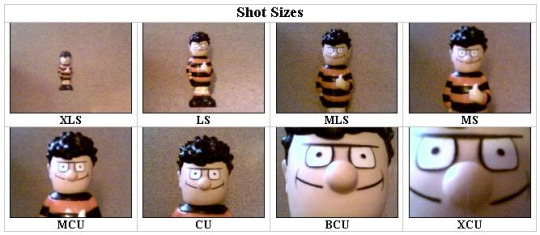
Source: The 'Grammar' of Television and Film, Daniel Chandler, visual-memory.co.uk. Link.
In film, scenes typically progress through the different types of shots in sequence: long shot, medium shot, close-up. When a new scene begins and the characters arrive in a new location, we typically begin with a wide establishing shot of the building’s exterior to show the audience where the scene will be taking place. Next comes a long shot of an interior space, which tells the where the characters are positioned relative to one another. The next shot is a medium shot of the characters conversing, and then finally, a close-up as the conversation reaches its emotional or informational climax. Insert shots are used judiciously throughout to establish themes or offer visual exposition.
Here's another visual guide to the different types of shots, illustrated with stills from Disney animated films.
This guide is almost 2,000 words long! To save your dash, I've put the meat of it under the cut.
Long shot and extreme long shots
A long shot (sometimes also called a wide shot) is one where the entire subject (usually a building, person, or group of people) is visible within the frame. The camera is positioned far away from the subject, prioritizing the details of the background over the details of the subject.
One of the most common uses of long shots and extreme long shots are establishing shots. An establishing shot is the first shot in a scene, and it sets the tone for the scene and is intended to give the viewer the information they’ll need to follow the scene: where a scene is taking place, who is in the scene, and where they are positioned in relation to one another. Without an establishing shot, a scene can feel ungrounded or “floaty.” Readers will have a harder time understanding what’s happening in the scene because on some level, they’ll be trying to puzzle out the answers to the who and where questions, distracting them from the most important questions: what is happening and why?
(I actually like to start my scenes with two establishing shots: an environmental shot focusing on the scenery, and then a second shot that establishes the characters and their position within the space.)
Long shots and extreme long shots have other uses, as well. Because the subject is small relative to their surroundings, they have an impersonal effect which can be used for comedy or tragedy.
In Fargo (1996) uses an extreme long shot to visually illustrate the main character’s sense of defeat after failing to secure funding for a business deal.The shot begins with a car in an empty parking lot, and then we see the protagonist make his way up from the bottom of the frame. He is alone in the shot, he is small, and the camera is positioned above him, looking down from a god-like perspective. All of these factors work together to convey his emotional state: he’s small, he’s alone, and in this moment, we are literally looking down on him. This shot effectively conveys how powerless he feels without any dialogue or even showing his face.
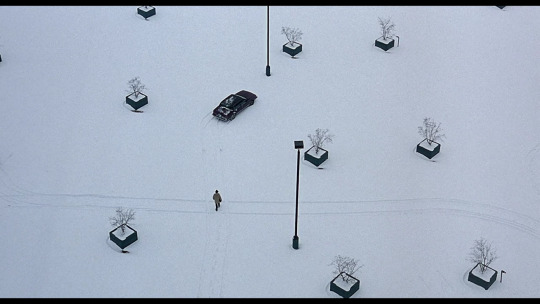
The same impersonal effect can also be used for comic purposes. If a character says something stupid or fails to impress other characters, cutting directly from a close-up to a long shot has a visual effect akin to chirping crickets. In this instance, a long shot serves as a visual “wait, what?” and invites the audience to laugh at the character rather than with them.
Medium Shots
Medium shots are “neutral” in filmmaking. Long shots and close-ups convey special meaning in their choice to focus on either the subject or the background, but a medium shot is balanced, giving equal focus to the character and their surroundings. In a medium shot, the character takes up 50% of the frame. They’re typically depicted from the waist-up and the audience can see both their face and hands, allowing the audience to see the character's facial expression and read their body-language, both important for interpreting meaning.
In most movies and TV shows, medium shots are the bread and butter of dialogue-heavy scenes, with close-ups, long shots, and inserts used for punctuation and emphasis. If you’re closely following the conventions of filmmaking, most of your dialogue scenes will be medium shots following the convention of shot-reverse shot:
youtube
To keep long conversations from feeling too visually monotonous, consider staging the scene as a walk-and-talk. Having two characters move through a space can add a lot of dynamism and visual interest to a scene that might otherwise feel boring or stiff.
Close Ups
Close-ups are close shots of a character’s face. The camera is positioned relatively near to the subject, showing just their head and shoulders. In a close-up, we don’t see any details of the background or the expressions of other characters.
In film, close-ups are used for emphasis. If a character is experiencing a strong emotion or delivering an important line of dialogue, a close-up underscores the importance of the moment by inviting the audience to focus only on the character and their emotion.
Close-ups don’t necessarily need to focus on the speaker. If the important thing about a line of dialogue is another character’s reaction to it, a close-up of the reaction is more effective than a close-up of the delivery.
One of the most iconic shots in Parasite (2019) is of the protagonist driving his employer around while she sits in the backseat, speaking on the phone. Even though she’s the one speaking, the details of her conversation matter less than the protagonist’s reaction to it. While she chatters obliviously in the background, we focus on the protagonist’s disgruntled, resentful response to her thoughtless words and behavior.

In my opinion, Simblr really overuses close-ups in dialogue. A lot of conversation scenes are framed entirely in close-ups, which has the same effect of highlighting an entire page in a textbook. The reader can’t actually tell what information is important, because the visuals are screaming that everything is important. Overusing close-ups also cuts the viewer off from the character’s body language and prevents them from learning anything about the character via their surroundings.
For example, a scene set in someone’s bedroom is a great opportunity for some subtle characterization—is it tidy or messy? what kind of decor have they chosen? do they have a gaming computer, a guitar, an overflowing bookshelf?—but if the author chooses to use only close-ups, we lose out on a chance to get to know the character via indirect means.
Inserts
An insert shot is when a shot of something other than a character’s face is inserted into a scene. Often, inserts are close-ups of a character’s hands or an object in the background. Insert shots can also be used to show us what a character is looking at or focusing on.
In rom-com The Prince & Me (2004) (see? I don’t just watch crime dramas…) the male lead is in an important meeting. We see him pick up a pen, look down at the papers in front of him, and apparently begin taking notes, but then we cut to an insert shot of his information packet. He’s doodling pictures of sports cars and is entirely disengaged from the conversation. Every other shot in the scene is an establishing shot or a medium shot or a close-up of someone speaking, but this insert gives us insight into the lead’s state of mind: he doesn’t want to be there and he isn’t paying attention.

Insert shots are, in my opinion, also used ineffectively on Simblr. A good insert gives us extra insight into what a character is thinking or focusing on, but a poorly-used insert feels…unfocused. A good insert might focus on pill bottles on a character’s desk to suggest a chemical dependency, on a family picture to suggest duty and loyalty, on a clock to suggest a time constraint, on a pile of dirty laundry or unanswered letters to suggest a character is struggling to keep up with their responsibilities. An ineffective insert shot might focus on the flowers in the background because they’re pretty, on a character’s hands because it seems artsy, on the place settings on a dining table because you spent forever placing each one individually and you’ll be damned if they don’t make it into the scene. These things might be lovely and they might break up a monotonous conversation and they might represent a lot of time and effort, but if they don’t contribute any meaning to a scene, consider cutting or repurposing them.
I want to emphasize: insert shots aren’t bad, but they should be carefully chosen to ensure they’re enhancing the meaning of the scene. Haphazard insert shots are distracting and can interfere with your reader’s ability to understand what is happening and why.
Putting it all together
One of the most basic principles of film theory is the Kuleshov effect, the idea that meaning in film comes from the interaction of two shots in sequence, and not from any single shot by itself. In the prototypical example, cutting from a close-up of a person’s neutral expression to a bowl of soup, children playing, or soldiers in a field suggests hunger, worry, or fear, respectively.
youtube
The Kuleshov effect is the essence of visual storytelling in a medium like Simblr. You can elevate your storytelling by thinking not only about each individual shot, but about the way they’ll interact and flow into one another.
Mastering the basics of film grammar is a great (free!) way to take your storytelling to the next level. To learn more, you can find tons of guides and explainers about film grammar for free online, and your local library doubtless has books that explain the same principles and offers additional analysis.
Happy simming!
#armorica tips#armorica ooc#i finally got off my ass to finish this guide which i started back in August right before I got extremely sick and ended up in the hospital#anyway....hope you enjoyed this post which was a veiled excuse for me to complain about how people overuse close-ups and inserts#and i can't tell what's happening in their stories ;fdsklsjadf;laksdf#Youtube
323 notes
·
View notes
Text
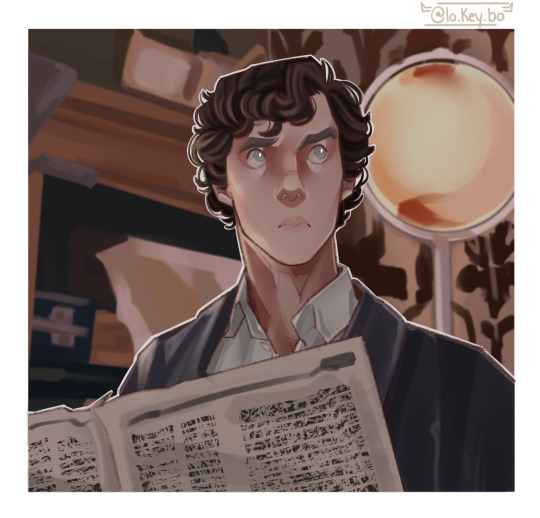
worlds best looking 169 y/o
#i honestly feel awful for not drawing acd holmes#or literally any other adaptation#but i’m appealing to the public (the 50 people who follow me for bbc sherlock on instagram)#[insert other frivolous excuses here]#my art#the @ is my insta#sherlock#bbc sherlock#sherlock bbc#fanart#fanartist#sherlock holmes#gen#benedict cumberbatch#john watson
1K notes
·
View notes
Text
"The way Vriska introduces herself to John says everything about her, and about their relationship, and really, her relationship with everyone. She forcefully interrupts a moment that is deeply important and emotional to him, thereby probably denying that opportunity from ever happening again, just so she can insert herself into his life and force him to pay attention to her. Now here she is again, being kind of rude (e.g. calling him stupid), but more than that, being vaguely obsequious overall, which is something about her I was harping on in the last book. Vriska cozies up to certain kinds of people, namely those she wants something from or feels will elevate her status by association. John's the perfect mark for the manipulative, ass-kissing games she plays. Since we're in the Vriska Zone now and forever, I'll just keep talking about her. It bears more examination of how her manipulation strategy seems to deftly blend ass-kissing and aggression. Successfully manipulative, sociopathically charismatic people tend to have this balance down to a science. The strategy seems to involve controlling the interplay between flattery, appealing to common interests, charming or flirtatious rhetoric, and little jabs, negs, or outright insults to keep the target off-balance. The target gets sort of hooked by the fascinating spectacle, intrigued, and strangely disarmed. Too much flattery results in suspicion, too much negativity is a turn-off (or taken to an extreme like Karkat, results in not being taken seriously at all). The barbs mixed in with the flattery are effective because they lead the target to think, "If this person really wants something from me, why would they insult me?" Of course, this is how pick-up artists operate, which isn't far off from Vriska's mindset when pursuing her goals—which, although more broad than romantic goals, are still mixed in with them, with the end result being part of the overall power play. Over the course of her tactics focused on John to make herself more relevant, when actual romantic designs start seeping into the fabric of her manipulation campaign, that's when it all starts to get...A Little Bit Weird.
We've already seen a lot of Vriska's tactics on display in Hivebent, with mixed results. By now she's had a lot of practice, and she's bringing all her skills to bear on the perfect rube for her schemes, this nerdy, gullible Egbert kid. The romantic angle that surfaces from this effort, as I just implied, is vaguely troubling. How else to describe it... ? Icky, maybe? Something is off about it, and we feel that more than John does, obviously because we know a lot more about her than he does. For Vriska, are the romantic desires real? Is she such a mess inside that she wouldn't be able to tell whether the feelings are genuine or not? It's more likely that it's all about the ego boost, the power trip involved with grooming this hapless fool into the thing she wants him to be, and hoodwinking him into feeling something for her. But for him, it's probably more sincere. His first awkward experience with romance, albeit one contrived by a manipulator. Too bad he has no idea that none of this even has anything to do with him. It's still just about Vriska's gamesmanship with Terezi, who is another person exhibiting many of the aforementioned qualities of a manipulator. Terezi just uses hers to target a different boy. Both are highly successful with their boywork, but they take very different approaches." -Andrew Hussie
#see like these are not the words of a person who genuinely excuses vriskas actions. hussie is bullshitting when they imply that shit#its satire but [insert in order for satire to work meme]#(sometimes lacks clarity of purpose)(ends up contributing to that which it intends to criticize)#anyways love 'boywork'#sams reading homestuck again#homestuck#vriska
228 notes
·
View notes
Text


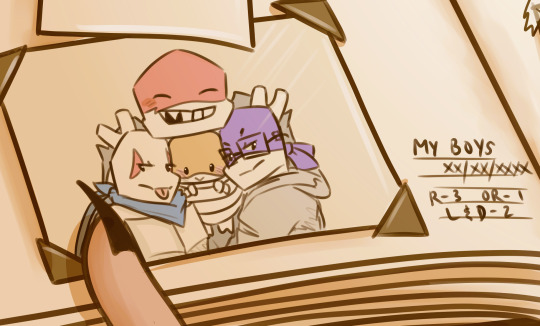

December 11 - Memories
1 | 2 | 3 | 4 | 5 | 6 | 7 | 8 | 9 | 10 | ...
#rottmnt#rise fanart#rise of the tmnt#turtle tots#master splinter#i feel like splinter would hide an album like this away just for himself#and he'd literally be the type to never let anyone know it exists#the minimal color scheme is definitely on purpose and not because i barely had time today... totally#the limited palette emphasizes the nostaliga and-*inserts more artistic excuses here* jksfljf#tei's dec23#teidoodle
317 notes
·
View notes
Text
nana with every single romantic couple in any script she writes:
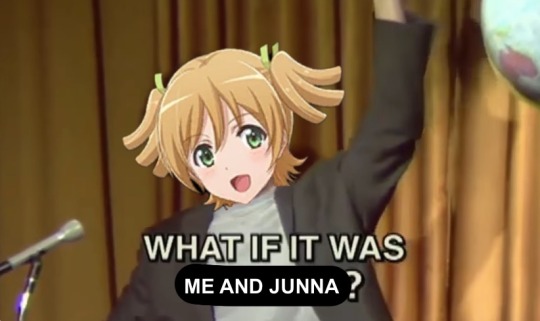
#girlie canonically takes “art imitates life” to whole new levels by self-inserting or projecting onto all the tragic villains she can find#and using any excuse to be in love with junna ““for a play”” 💀#shoujo kageki revue starlight#revue starlight#junnana#nana daiba#junna hoshimi
238 notes
·
View notes
Text

Dancing
#i just wanted an excuse to draw Todd dancing with Della and my sona 🥺#❤️ scratchyenne ❤️#self insert#self ship#🎨 chy creations 🎨#self ship fankid
233 notes
·
View notes
Text
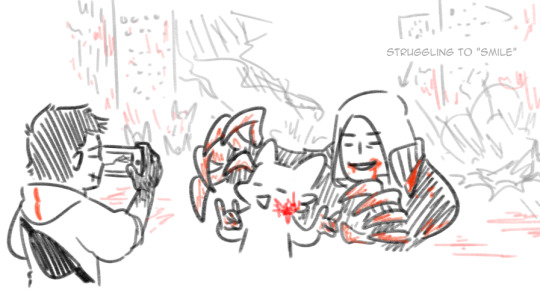
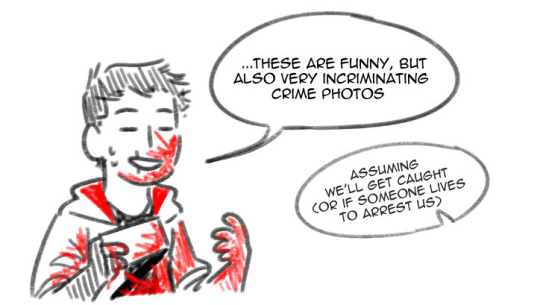
having a (bloody) fun time replaying prototype and taking pictures, especially with an hd texture mod that sometimes glitches out and leads to hilarious results

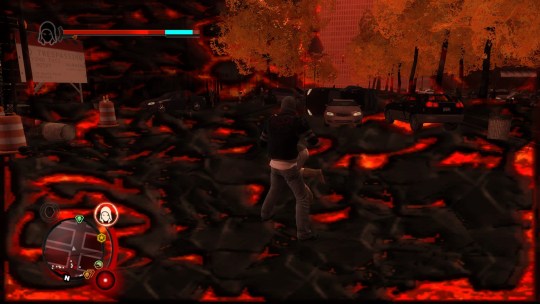
#protocreed#prototype 2009#assassin's creed#doodles#this is another how-my-day-is-going doodle to the lofter friend so excuse the silliness and blatant self-insert LMAO#ghosts in the machine au#foxsona
160 notes
·
View notes
Text
Random ass Eustass Kid one shot.
College AU I guess.
Reader just got dumped, no pronouns used. Kid calls ‘em Mouse because I love it when Kid calls the reader Mouse so you’re probably going to see that in Every Single Kid Fic I Ever Write.
SFW, comfort
Cheesy
“You alright?”
The gruff familiar voice crashes over you like rain, and you dry your tears hastily before glancing up at him. You can’t feign contact long though, and look away.
“Yeah.” You say, with a defeated huff.
There’s a pause, and it’s almost awkward. You’ve never known Kid to suffer awkwardness.
“You sure?” He prompts, sitting down beside you. There was no shaking him now, but you weren’t sure you wanted you to.
“Yeah.” You say a little more energetically. “I’ll make it.”
Kid snorts, looking around a little before he rummages in his pack and pulls out a candy bar and a soda. “Anything you want me to deal with?”
You laugh, a sharp barked sound, taking the offered snacks without arguing. You know what kind of help Kid’s good at, and it’s not diplomatic, that’s for fucking sure.
“Nah. It won’t fix it.” You admit, wiping a tear that’s pricked the side of your eye for a different reason.
“Might make ya’ feel better.” He offers, pulling out another soda and opening it for himself.
You smile, the concern is appreciated at least. “It… won’t. Is what it is, I just need to move on.”
“… it woulda made me feel better.” He grouses, and you look over to see his ears are pink.
You look away at the implication and busy yourself with the candy bar for a few long moments. It’s comfortable around him, always has been. He’s just too loud, too proud, too dangerous for you.
It wouldn’t work.
At least that had been what you told yourself when you’d turned him down, picking a different guy to date a few months ago. Kid had warned there wouldn’t be another chance, he wasn’t someone who waited around for a pretty piece of ass. It had almost been a fight between you two, the first real one you maybe ever had.
“I… thought you were gonna move on.” You murmur quietly.
The silence stretched on for long enough you figured that was the end of the conversation. Eustass Kid wasn’t going to dent his pride for someone, no matter who they were. One of the guys maybe, someone who’d been in his life for decades. You could see him pushing aside his pride for Killer or Heat or Wire, if he had no other choice.
Still, it was nice to have someone around while you shrugged off the pieces of a failed relationship. Besides, you wouldn’t risk treating Kid like some rebound.
You shift a little, trying to find the words to say farewell for now, but Kid gets up. A heavy hand ruffles your hoodie against your hair, pushing your head down as you grumble at him.
“When you’re ready to give some flaky loser another shot, Mouse, let me know first.” He says, in a voice that’s trying to sound flippant.
“You’re not a flaky loser,” you retort, scrambling to your feet. “I don’t want you to say that about-!”
Kid turns on his heel suddenly facing you, hand wrapped in your hoodie as he pulls you into a rough kiss.
The action shatters your brain, so sudden and desperate and needy you don’t know what to do but sink into him. The kiss breaks and his eyes are locked on yours, a crooked grin on his face.
“Not how I meant that, Mouse.” He hums, in a voice soft and sure and devastatingly sweet to your ears.
He lets you go, turning and walking away. “Think it over. I’m not stupid enough to let you go if you’re dumb enough to pick me.”
#quin muses#reader insert#x reader#eustass kid#one shots#one piece fanfiction#I typed this on my phone when I couldn’t stand working and needed a break#so please excuse any missed words or typos.
158 notes
·
View notes
Text
not to get into hashtag discourse but i can’t get over some of these character brackets banning mcrp characters for “crossing the line into rpf” yet nearly always have some sort of dnd character in their polls. do you not see your hypocrisy. do you not see how those are the exact same thing told through different mediums.
#icarus speaks#discourse#?#they are both. often. self-inserts of the actor playing them#if taako is allowed on ur gay wizards bracket there is no excuse to not allow witchcraft!scott#i’ve seen like. four of these do this by now#WHAT is the difference.#are we banning jonathan sims now too for sharing the same name as his actor? hm?
798 notes
·
View notes
Text
i’ll go see you again tomorrow (spring is coming to an end) ; sashisu
[ part 0 - first meeting ]
synopsis; the gradual blossoming of a youth shared with three strange classmates, at the weird, isolated boarding school you all attend. as the seasons of your first year together pass, the relationship between you changes into something you don’t need to put into words to understand.
word count; 1.6k
contents; sashisu/reader (but can be read as either platonic or romantic, or something inbetween!! i wrote it with the latter in mind), gn!reader, no curses au (dw they’re all still a little bit insane and damaged), very shoujo manga-esque, reader is a little bit in love with all their friends, just wholesome comfy vibes :), characters may be ooc but pls bear with me </3
a/n; this is the shorter opening piece of a sashisu/reader series i’m writing and the first out of six planned parts!! :> the rest will be much longer this is just me setting the tone. sorta. i’m extremely normal about sashisu and i wanted to write something summery and sweet so <3

you first meet them in a sun-soaked classroom, with blue-tinted windows.
the room in question, clearly not having been of use for some time, is just a little dusty. enough that you notice it, nose scrunching up as your gaze trails over the space.
tiny specks of light dance around, meeting and intersecting between the gaps where streaks of sunlight fall and illuminate the floorboards. they’re oddly mesmerizing, a little hard to forget. the flicker of their movement begins to etch itself into your retinas; for some reason, you can’t quite take your eyes off them.
eventually, your attention is caught by something else, coaxing you into moving your gaze towards the translucent windows. they glimmer softly, tantalizingly in the sunlight, reflecting the blue of the sky. through the glass, it’s all you can see at first — a sky so blue that it’s a little irritating. big, white clouds are scattered like splotches of paint across a blue canvas, treading gently over the boundary of your vision.
in a similar fashion, the ground of the schoolyard is littered with dots of white. for just a second, you delude yourself into thinking that it’s snow; it’s not until you spot the skeletal trees and their pale blossoms that you see them for what they are. soft petals flutter down to the ground eagerly, covering everything in a pure white.
it really is eerily reminiscent of a snowy landscape, ephemeral in its beauty. it gives you the impression of having stepped over some sort of threshold, into another realm, another world entirely. coated in apricot blossoms, soaked in sunlight.
(it shouldn’t be possible from where you’re standing, behind the windows — but the scent reaches you all the same. everything smells of apricots.)
it’s springtime, and you’re in the prime of your youth.
a youth you’re about to share with three other kids, all standing in front of you and wearing mildly indifferent expressions as you give each other a brief glance.
you try not to stare too hard, but it’s difficult to resist the temptation. three new classmates, mysterious and just slightly intimidating; two guys, and one girl. the tiny glances you steal at them aren’t very sneaky, but you doubt they’d care, when they’re all doing the same.
you study their appearances, eager to sate the curiosity clawing at your heart.
the girl is pretty.
the expression on her face is laid-back, almost bored, and she looks a little like she doesn’t quite want to be here. her hair reaches down to her chin, just barely, brown and smooth and silky. estimating her exact height is a little tough; you can tell she’s fairly short, but you don’t know how much of it is exaggerated, courtesy of her placement between the other two. their lanky legs and broad shoulders only make her look smaller in comparison.
her eyes are chestnut-coloured, a little dim, somewhat hazy. there’s a mole under one of her eyes, too, and you’re acutely aware of how charming you find it. you’re relieved to have at least one girl in your class, anyhow. you hope she’s nice.
the boy on her right is pretty, too.
he’s much taller, and wearing a somewhat serious expression, but something about him feels almost comforting all the same. he seems relaxed, but also sharp, as his eyes trail across the room. his hair is black and silky, and it’s long — or so you assume, judging by the fact that he’s got it in a bun. two things about him stand out in particular; one, the black gauges on his ears, and two, a single lock of hair framing his face. his hair is tied up and neat, prim and proper, with the exception of his bangs. you don’t think it looks bad, exactly, but it’s an odd choice.
at first glance, you think his eyes are black, but when a ray of sunlight falls across his face you realize that they’re brown. a deep colour, oddly soothing, warm. little sparks of amber glitter in the depths of his irises, illuminated only by the sun. it gives you the impression that there’s more to him than meets the eye.
then there’s the other boy.
he’s the most intimidating out of the three, without a doubt, though you still can’t pinpoint exactly why. he strikes you as particularly unnerving; maybe it’s the expression on his face, that you can’t seem to identify. he’s also tall, very tall, even taller than the other guy — though only by a smidge. he towers over you slightly, and that unnerves you even further. there’s something in the way he’s standing that almost seems a little menacing. his hair is white, and soft, and just a tad messy. and he’s wearing a pair of round sunglasses, even though you’re indoors.
you can’t see his eyes well, behind the black glass, but you get the vague impression that they’re blue when sunlight cascades down the contours of his face and reflects in them.
you take another moment to simply look at them, observing them, as if trying to reach some sort of conclusion about what they’re like. it doesn’t really work, but you do get some semblance of an impression.
finally, your teacher clears his throat, breaking the silence of the classroom — urging you to hurry up and get the introductions done and over with. the impatient reminder snaps all four of you out of your collective trance.
the first person to speak up is the boy with the weird bangs. that alone gives you a sense of his personality; polite, proper, the first to do the thing no one really wants to do.
”my name is suguru geto,” he begins, well mannered. ”it’s nice to meet you.” his voice is pleasant, somehow. nice to listen to. there’s something comforting about it, that you can’t quite place; it sounds almost familiar, like you’ve heard it all your life.
then, the cute girl chimes in, casual and unbothered as she fiddles with something in her pocket. ”shoko ieiri. just call me shoko,” she says, short and sweet.
she really is pretty, you muse, bathed in the streaks of sunlight falling haphazardly across the room. and she seems nice, not uptight or obnoxious; the kind of person that’s easy to talk to, easy to be friends with. you think you like her already. but she notices your lingering stare, and so you look away, gaze falling to the floorboards.
finally, after a slight pause, the boy with the sunglasses speaks up. you still can’t get a good read on his expression. ”… satoru gojo,” is all he says, and you can’t seem to grasp his tone of voice, either.
it irks you, though. you’re not sure why. you almost get the sense that he thinks he’s appeasing you, by introducing himself, like hearing his name is a priviliege. that, and you feel a little like you’re being dissected when his gaze falls on you — like he’s weighing your value, deciding your worth. you think you almost catch a glimpse of his eyes behind the black tint of his glasses, and they strike you as acutely menacing, bright blue and uncanny. you decide that you don’t like him, and that his sunglasses are kinda ugly.
their gazes fall on you, at last.
you’re the only one whose name they don’t know, now. it’s a kind of power, in a way, the power of mystery. intrigue. their stares feel heavy on your skin, and you feel more than a little nervous; but you’re intent on following the silent cue, all the same.
and you do so, dutifully, raising your hand up in a silent hello before tentatively saying your name. then, in a voice you hope doesn’t come across as bored or unpleasant:
”— it’s nice to meet you.”
some of them hum in affirmation, as if to say it’s nice to meet you too — others remain silent. even when the introductions are finished, you continue to look at each other, vaguely and discreetly, as if trying to look inside each other’s heads.
but then your teacher begins to speak, in an authorative voice, and you’re snapped out of the trance, once more.
he babbles on and on, about something you’re sure is important, something about the school and the classes you’ll be having and the dorms and so on. you try to listen, you really do, but it’s tough — you vaguely get the gist, but all you can really think about is your classmates, still so mysterious and intimidating.
you try to repeat their names, inside your mind, trying to ingrain them into your memory.
suguru geto, shoko ieiri, and satoru gojo.
you still don’t really know what to think about them. shoko will probably be fairly easy for you to warm up to, but the other two are a different story. all three of them seem to have strong personalities, reflected in their eyes; a dim hazel, a deep umber, and a stark azure. you don’t know what’s hidden in them, but you have a strange inkling that you will, in due time.
that’s how the four of you meet. and in this moment, as you look into their eyes for the first time, you have no idea how much your life has changed — how much they’ll change it for the better.
you only know that it’s springtime, and that you’re in the prime of your youth.
a youth you’re about to spend with these three kids in front of you, who you know nothing about. some part of your soul urges you to find out, for yourself.
maybe you will.
(outside the sun-soaked classroom, through the blue-tinted windows, the world observes your meeting with bated breath and barely contained excitement.)

part i
#title is taken from the lyrics of yorushika’s ’spring thief’ btw i listened to it while writing this n cried <3 its sooo sashisu.#anyway!!! this series ended up kinda reader-centric but the focus is meant to be on the relationship between all 4 of them#its just… really easy to analyze the characters from a third party pov. and im a shameless self inserter so. x reader it is!#this series is also my excuse to (attempt to) analyze sashisu as a trio/individually but idk if my own interpretation will align w/ canon#in my defense theyre a lot less traumatized in a no curses au#but i still wanted to try and explore their high school selves + their issues w/ intimacy and trust n all that. im obsessed with them.#so i hope i did a decent job :’) anyway thats enough ranting in the tags if u read this far i am in Love With You#sashisu x reader#shoko ieiri x reader#geto suguru x reader#gojo satoru x reader#sashisu#gojo satoru#geto suguru#shoko ieiri#jujutsu kaisen x reader#jjk x reader#…. i think thats all#jujutsu kaisen#jjk
268 notes
·
View notes